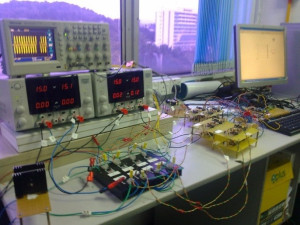Title: A New Five Level Active Neutral Point Clamped Converter for Equal Losses Distribution and Voltage Balancing

Abstract: Three-level neutral point (3L-NPC) converter is one of the main topology in the industrial applications and standard converter in medium-voltage applications. However, the balancing losses among the switches and balancing of capacitor is the main problem of this topology. Active neutral-point-clamped (ANPC) converter is advanced family of 3L-NPC, which was originally proposed to solve the drawback of unbalanced power loss distribution among the devices in conventional neutral-point-clamped (NPC) converters. Hence, improving the performance and features of the NPC, and increasing their efficiency. This work presents a new single phase 5-level Active Neutral Point Clamped (ANPC) converter topology. Using a single DC supply and four capacitors create more divisions in the DC link, the proposed structure produce five voltage levels. The proposed topology helps to reduce the circuit size and cost for a given number of levels. Another drawback is the voltage balancing among the DC capacitors. To solve this problem, an addition circuit has been suggested. Moreover, the 5-Level ANPC can be applied to achieve optimal total harmonic distortion. The structure of topology designed in such a way to maintain the equal switching losses among the switches. An analysis of the switching state and the commutation of the converter are also being presented. The simulation has been carried out in MATLAB Simulink to investigate the effectiveness of the proposed topology. The simulation result shows that the proposed topology can achieved better distribution of the total power losses, between two different strategies PWM-2 and PWM-1. Moreover, the floating capacitor voltage is subdivided into four parts and the balancing is achieved by the additional circuit. The experimental results are also presented to justify the validation of the proposed topology. Moreover; a comparative study has been made to show the cost effectiveness of the proposed topology.
Last Update: 21/11/2022